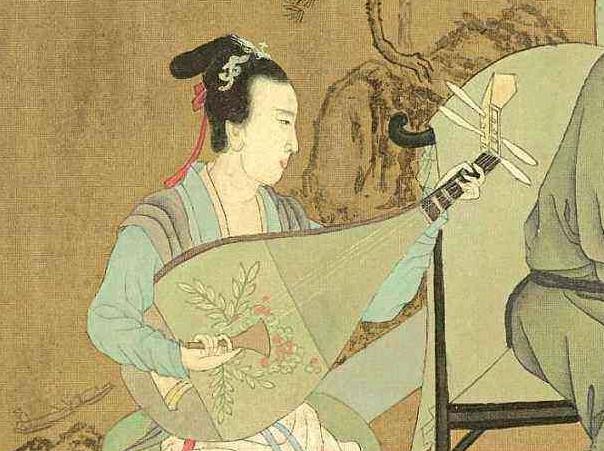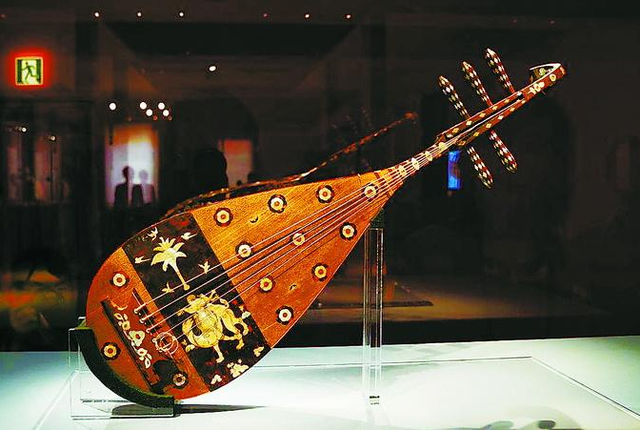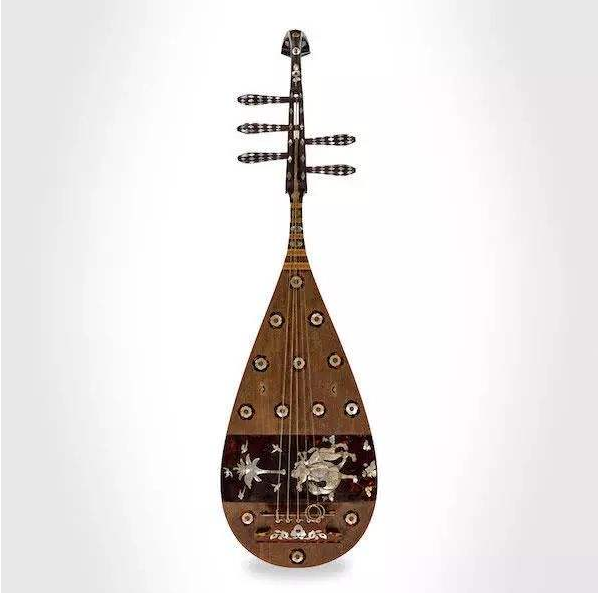The Development of Pipa Art in Tang Dynasty: Communication and Integration Promote the Improvement of Pipa Form
Due to the highly prosperous development of music culture in the Tang Dynasty, the art of pipa also developed tremendously during this period. The open social environment and culture, as well as the prosperous economy, attracted many foreign pipa artists to live in the Tang Dynasty, which enabled the exchange and integration of the pipa art at this time, promoted the improvement of the pipa shape, and the development of the pipa art reached an unprecedented height. Pipa music had a place in the court.
The pipa used in Jiaofang, a music institution in the Tang Dynasty, was the Quxiang pipa from the Western Regions. With its unique tonal charm and exotic cultural style, the pipa is not only loved by the ruling class, but also by princes, nobles, literati, writers, and common people. In the murals of the Mogao Grottoes in Dunhuang County, Gansu Province, only music and dance are depicted in the frescoes. The scene generally has the shape of a musical performer holding a pipa, which shows that the pipa art of the Tang Dynasty developed widely and had a great influence in the Tang Dynasty.
The Prevalence of Pipa in Tang Dynasty
The social status of the pipa in the Tang Dynasty was extremely high, ranging from princes and nobles to commoners in the market. Emperor Gaozong's favorite concubine Yuhuan was also a master of the pipa. Since the pipa was introduced to China from the Western Regions, the development of the pipa instrument can be seen from the development of its shape and performance skills in the Tang Dynasty.

The Development of Pipa Form
The development of the pipa before the Tang Dynasty—the pipa recorded in the literature and historical materials from the Han to the Wei and Jin Dynasties is a round body, straight item and four strings created by the people of our country. The name of a musical instrument. This musical instrument was called Qin Pipa in Du You's "Tong Dian" in the Tang Dynasty, and was also called Qin Pipa (or Qin Hanzi) in the following documents such as "Old Tang Book" and "New Tang Book".
The development of the pipa in the Sui and Tang Dynasties—from the Southern and Northern Dynasties to the Sui and Tang Dynasties, due to the appearance of various shapes of pipa, the concept of pipa to people has changed. It has become a general term for the same type of plucked instruments from the above-mentioned round, straight, and four-string plucked instruments.
Under the influence of the open tendency of the cultural policy of the Tang Dynasty, the social atmosphere was enlightened, the culture was diversified, and various kinds of music and art were exchanged and integrated. . The music culture introduced from the Western Regions had a profound impact on the pipa art in the Tang Dynasty and even the modern pipa art. The developed economy in the Tang Dynasty attracted many foreign pipa artists to live in the Tang Dynasty, which led to the improvement and perfection of the pipa shape. Quxiang Pipa and Wuxian Pipa are both important artistic presentations under the exchange and integration of ethnic cultures in Tang Dynasty society.
Qu Xiang Pipa
Quxiang Pipa, also known as "Huqin" and "Hu Pipa", was the most important form of Pipa in the Tang Dynasty. The earliest birthplace of the Quxiang Pipa was in Persia (now Iran) and the Arab region. Later, with the introduction of Buddhist scriptures, it was spread to Qiuci and Yanqi at the northern foot of the Tianshan Mountains in Xinjiang through the Silk Road, and then gradually developed to the Central Plains. These pieces of pipa are played with a plectrum held horizontally. In the lower part of the pipa panel, there is a small board to tie the strings, which is the role of the "Buddha's Hand" in modern pipa. Quxiang Pipa has the deepest influence in my country. It was the transportation hub leading to Tianzhu, Persia and Arab countries in ancient my country. Therefore, Qiuci music was the most popular music in western my country at that time.

Five-stringed straight pipa
The five-string straight pipa is slightly smaller than the Quxiang four-string pipa. Like the Quxiang pipa, the five-string pipa also originated in Central Asia. The difference is that the development path is different. The Quxiang pipa grew up in Persia. , while the five-stringed lute was developed in India. The five-stringed pipa was originally straight and hand-played. When it was introduced into my country, it passed through the Khotan area south of the Tianshan Mountains in Xinjiang. It was in the same period as the four-stringed pipa, and there were certain changes. This is the inevitable result of cultural exchanges.

The five-string straight pipa is made of precious red sandalwood. The back and top of the piano are inlaid with exquisite luodian and rare tortoiseshell decorations. The top of the piano is also inlaid with an exquisite painting, which depicts a People in exotic costumes play lutes on camels. It can be seen from the excellent production of the Tang Zitan Luodian five-string straight pipa collected in Japan that the art of pipa has reached a very mature state at that time. There are five-stringed straight-necked pipa in the Qiuci Culture Grottoes excavated in Xinjiang!
 渝公网安备 50010702504639号
渝公网安备 50010702504639号